Is cleaning your chicken coop proving to be a difficult task because of your chickens’ droppings? Then potty train your chooks with this chicken roost with a poop board!
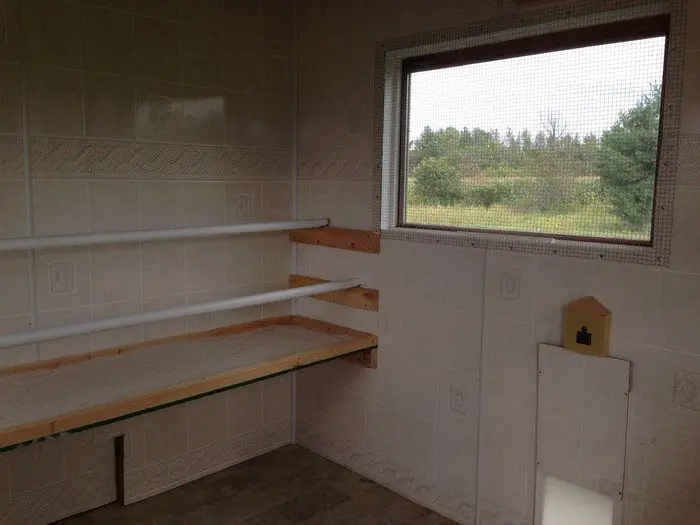
Just like your home, your chicken coop requires regular cleaning. To raise healthy chickens, you need to clean your coops well and diligently – especially after long periods of absence.
Cleaning your chicken coops requires specific steps, though. You need to be thorough and should only use natural cleaning supplies that won’t irritate the chickens.
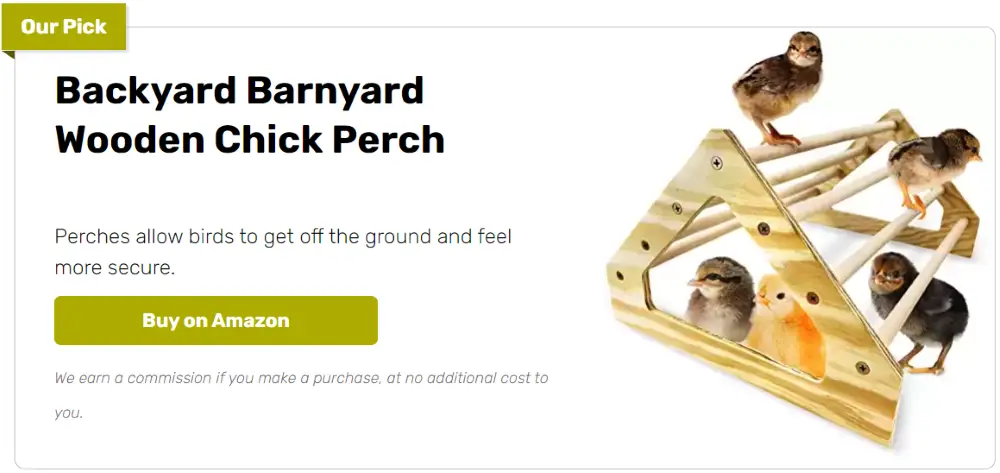
This chicken roost idea definitely makes cleaning the chicken coop easy. It can contain all the droppings in a single box. And since it is located above the ground you don’t have to stoop down to do the task.
This project is simple but the design would of course depend on the space that you have. You can get inspiration for designing your own version by looking at the examples from our album below. And if you need more information about the basics of building a chicken roost, here’s an article that should help!
“But what matter do I put in the ‘litter box?” Coarse sand would be great as it helps dry out the droppings, thus keeping odor to a minimum. But if the odor is really a problem in your chicken coop, then use granular PDZ which looks like kitty litter. It desiccates droppings just like sand, and it’s very good at minimizing odor!
Every chicken roost with a poop board is unique. Yours might not be high enough for your chooks to need a ramp. But it’s important, at least during the first few days, to guide your chickens into using their new chicken roost.
Once you start using this chicken roost idea, you won’t dread cleaning your chooks’ droppings anymore!
Is this going to be your next project?
Contents
Building a Chicken Roost
Materials
- Timber
- Sand
- PDZ
- Wood Screw
Tools
- Measuring Tape
- Saw
- Cordless Drill
- Sander
Instructions
Step 1: Design Your Roost
- Plan the Dimensions: Measure the available space in your chicken coop. A typical roost is about 2 to 4 feet off the ground and each chicken needs about 8-10 inches of space on the roost bar.
- Sketch the Design: Draw a simple sketch of the roost, including a poop board beneath the roosting bars. The poop board should be wide enough to catch droppings (usually 12-18 inches wide).
Step 2: Cut Your Timber
- Cut Roost Bars: Use the saw to cut the timber into lengths for the roost bars. If you have multiple chickens, consider multiple bars.
- Cut Supports and Legs: Cut additional pieces for vertical supports and legs, ensuring they can hold the roost securely and at the desired height.
- Cut Poop Board: Cut a larger piece of timber for the poop board that fits under the roosting bars.
Step 3: Sand the Wood
- Smooth the Timber: Use the sander to smooth all the cut pieces of wood. This prevents splinters that could harm your chickens.
Step 4: Assemble the Frame
- Construct the Frame: Using the cordless drill and wood screws, assemble the frame. Attach the legs to the vertical supports and secure the roost bars horizontally across the top of the supports.
- Install the Poop Board: Attach the poop board directly beneath the roost bars, ensuring it is stable and securely fastened.
Step 5: Prepare the Poop Board
- Add Sand and PDZ: Spread a layer of sand evenly across the surface of the poop board. Then, sprinkle a generous amount of PDZ over the sand. This combination will help absorb and neutralize odors from the droppings.
Step 6: Install the Roost in the Coop
- Position the Roost: Place the completed roost inside your chicken coop. Choose a location that is dry and protected from elements.
- Secure the Roost: If necessary, secure the roost to the coop walls or floor to prevent tipping.
Step 7: Introduce Your Chickens to the Roost
- Guide Your Chickens: Initially, you might need to place your chickens on the roost to acquaint them with it, especially at dusk when they settle for the night.
Click on any image to start the lightbox display. Use your Esc key to close the lightbox.![]()
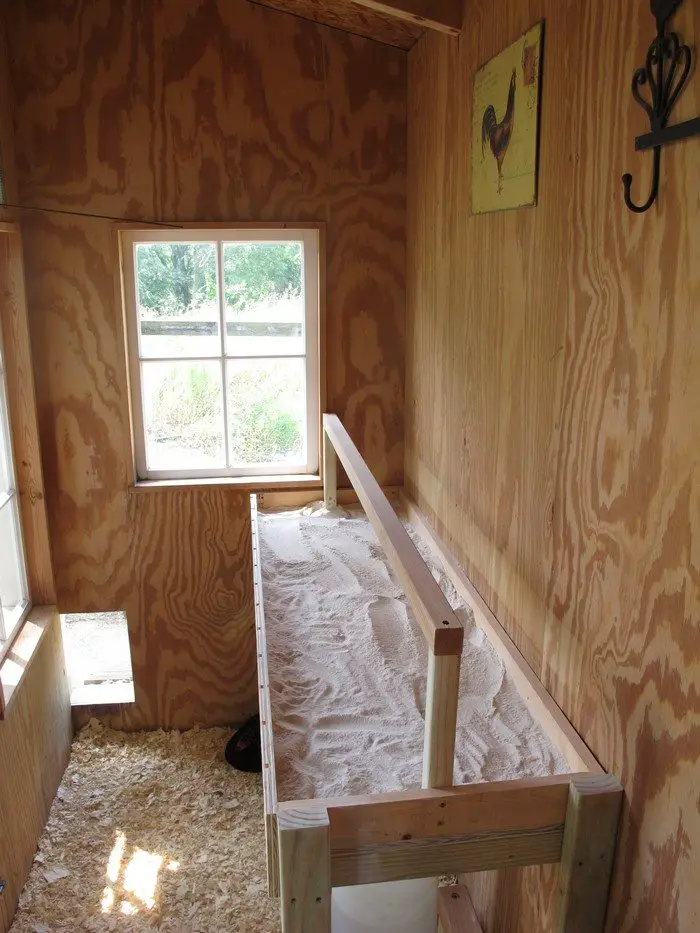
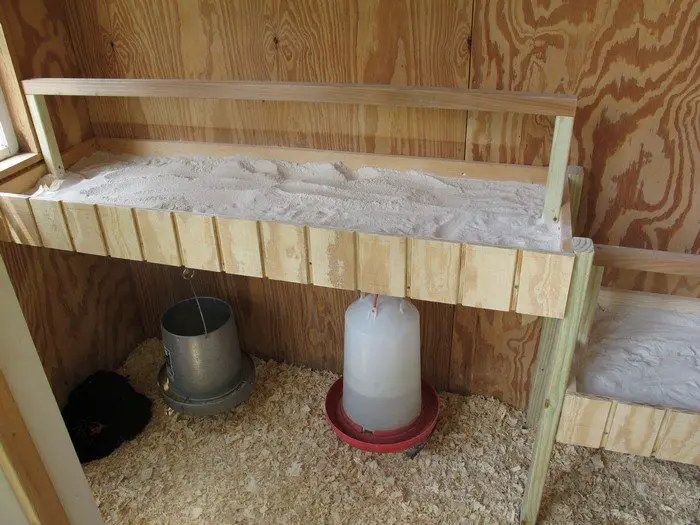
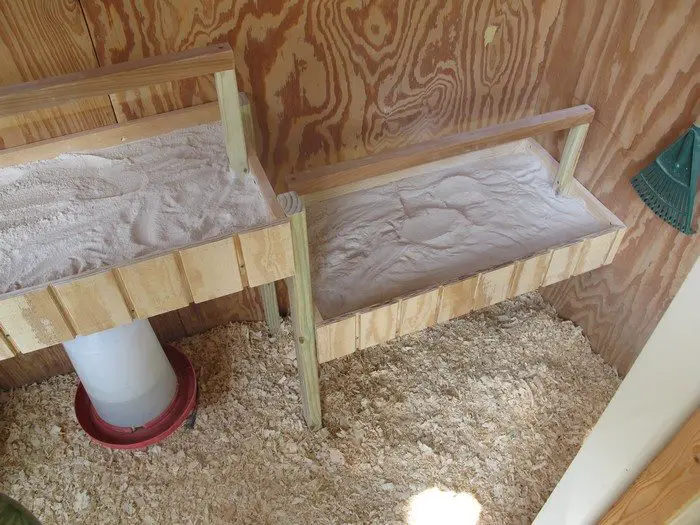
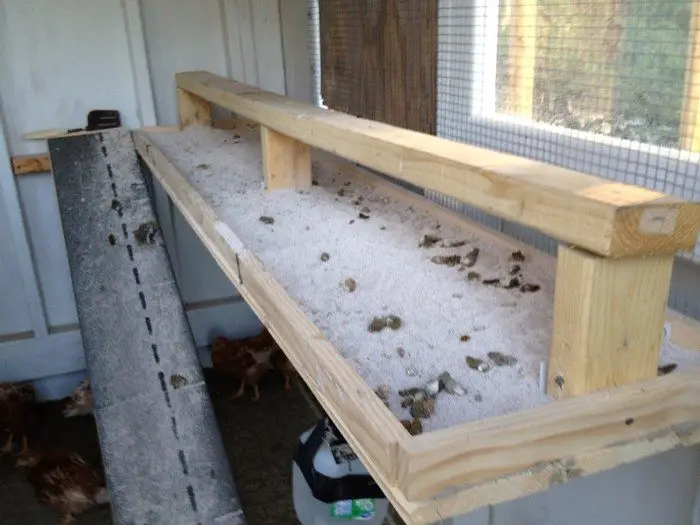

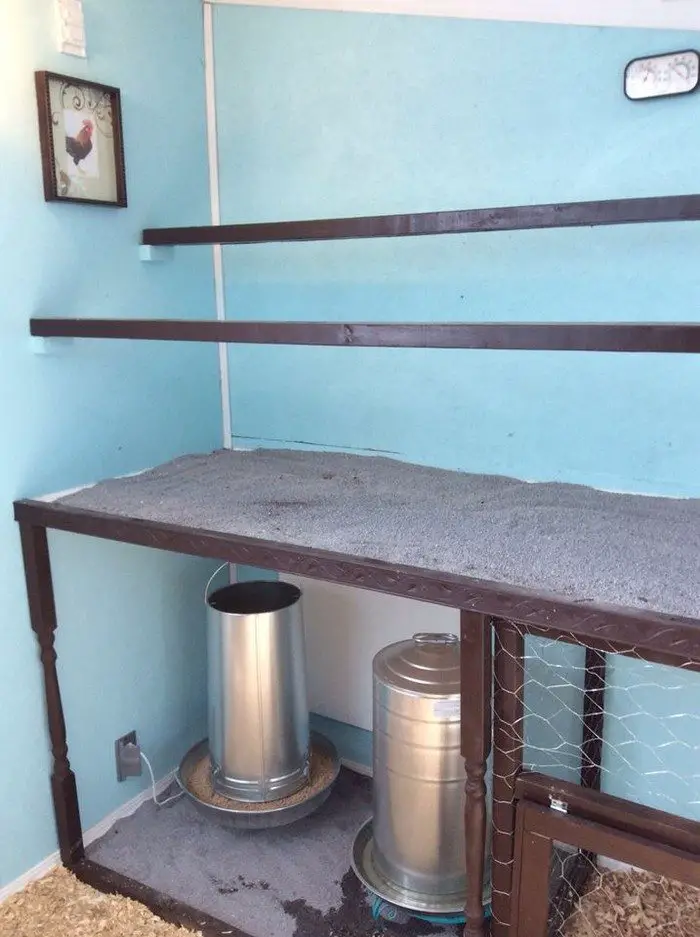
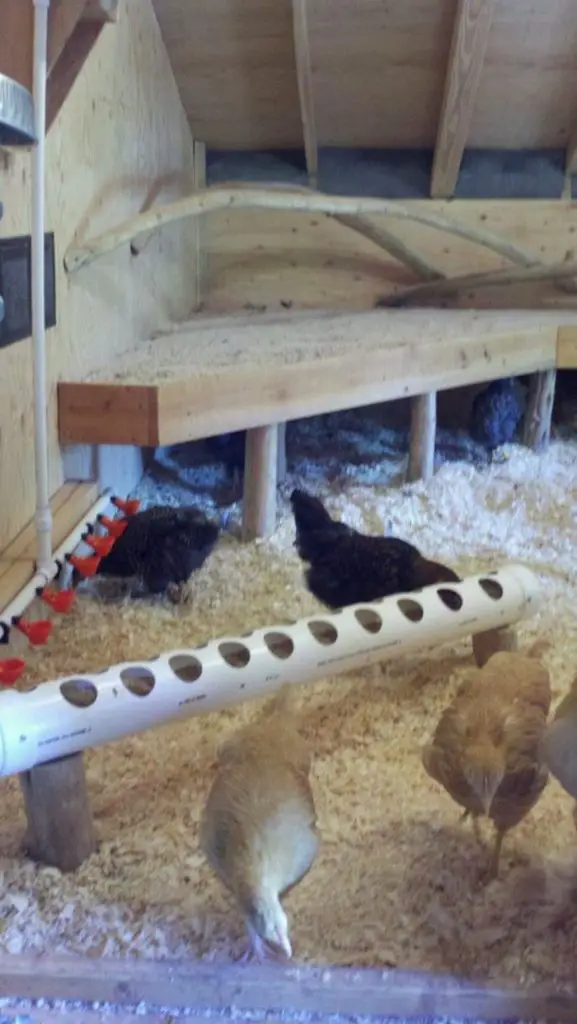
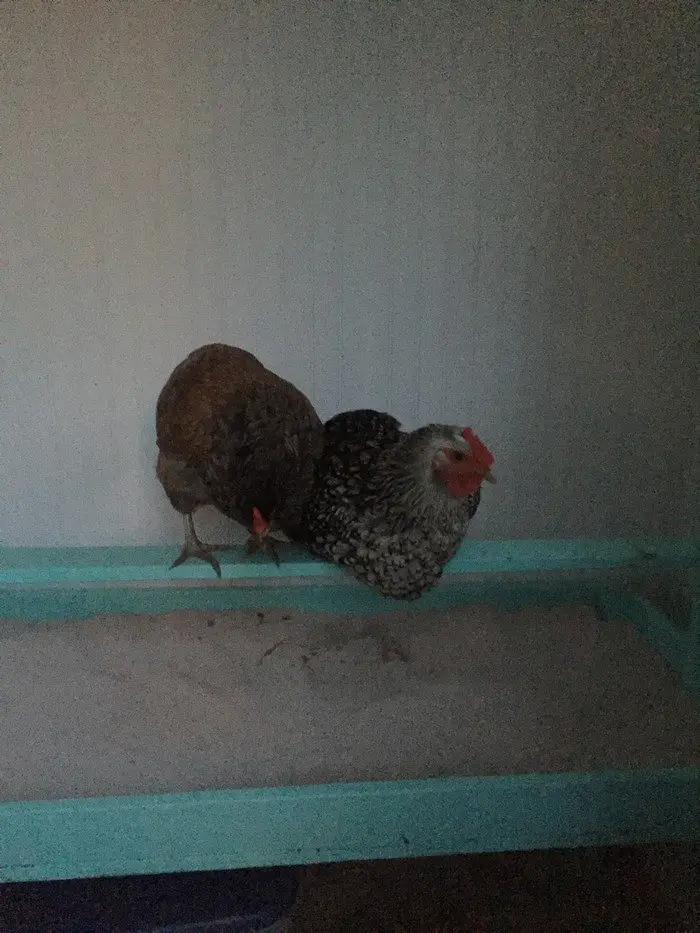
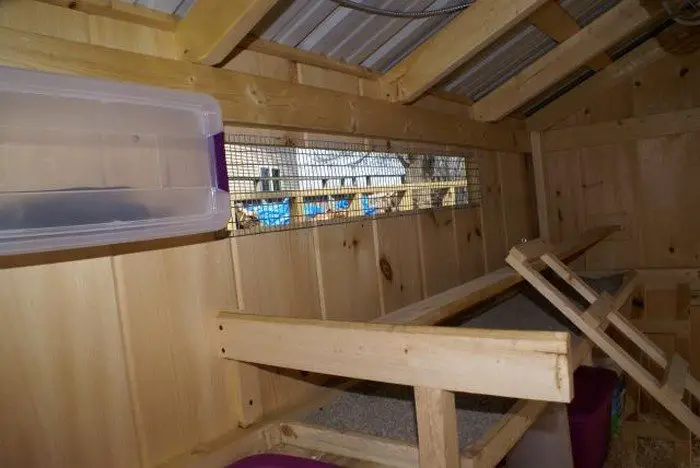

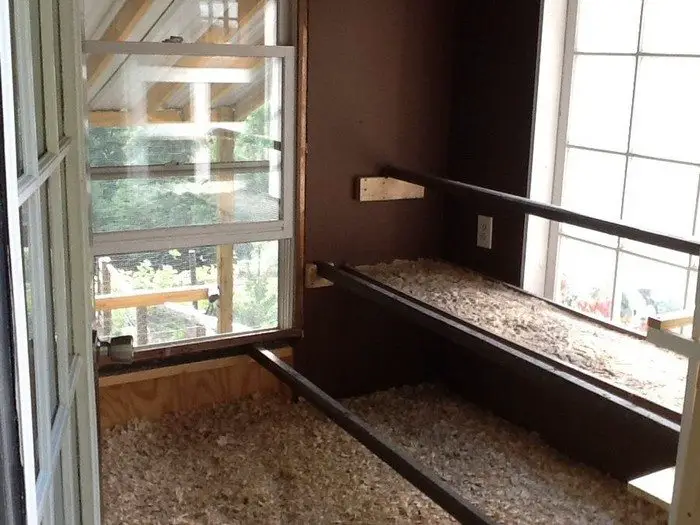
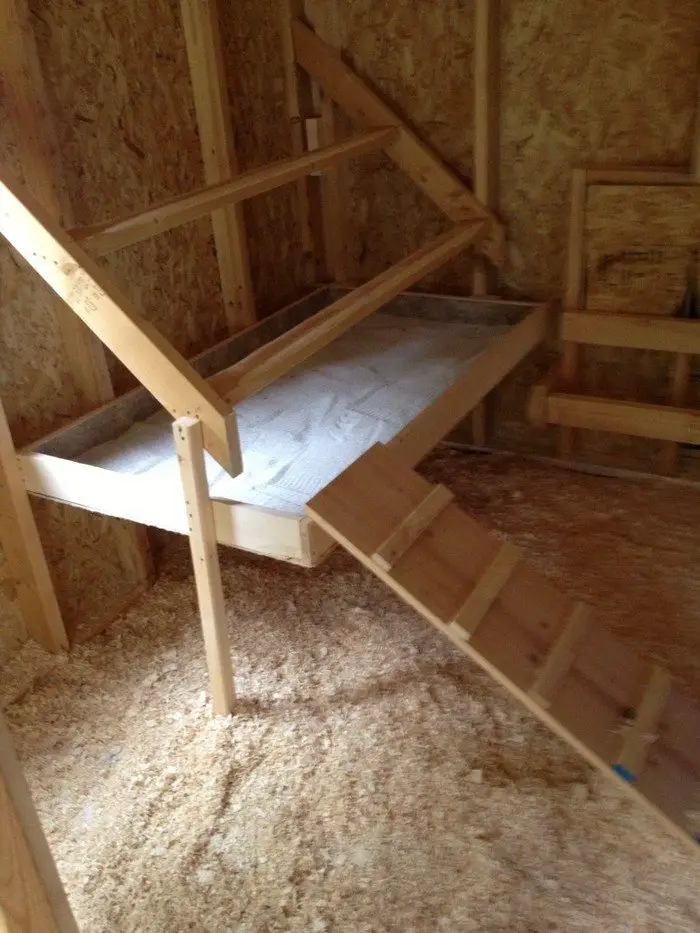
You can get more step-by-step instructions here…
Design Considerations for Chicken Roosts
A chicken roost is more than just a perch for your chickens to sleep on; it’s an essential feature of any coop that aids in promoting natural chicken behaviors and health. Designing an effective roost involves understanding the specific needs of your chickens and accommodating them in the layout and materials used.
Height and Accessibility
- Optimal Height: The roost should be high enough to keep chickens off the ground, typically 2 to 4 feet, to protect them from ground-level predators and to provide a sense of security.
- Accessibility: Consider the age and breed of your chickens. Older or heavier breeds might require lower or more accessible roosts. Incorporating ramps or staggered roosting bars can help chickens reach the roost easily.
Space Requirements
- Bar Space: Each chicken should have at least 8-10 inches of space on the roost to prevent overcrowding and to reduce pecking and other aggressive behaviors.
- Spacing Between Bars: If your design includes multiple roosting bars, space them at least 12 inches apart vertically to prevent droppings from falling on chickens on lower bars.
Material Selection
- Wood Use: Wood is the most common material for roosts because it’s easy to work with and provides a natural gripping surface. Ensure the wood is untreated and free from sharp edges. Round or rectangular bars with smoothed edges are ideal.
- Durability and Cleanliness: Choose materials that are durable and easy to clean. Avoid metal bars, as they can get too cold or hot depending on the weather.
Stability and Placement
- Secure Installation: The roost must be stable to prevent it from tipping over. Secure it firmly to the coop walls or ensure the base is wide and stable enough to stand alone.
- Location in the Coop: Place the roost away from the main entrance to reduce disturbances during the night. It should also be positioned away from direct drafts, yet still provide adequate ventilation.
Integration with Other Coop Features
- Proximity to Nesting Boxes: While roosts should be higher than nesting boxes to discourage chickens from sleeping in the boxes, they should not be placed too far as to make the nesting boxes hard to access.
- Poop Management: Consider placing a poop board beneath the roost to collect droppings, facilitating easier cleaning and maintenance of the coop.
By carefully considering these design elements, you can create a chicken roost that not only meets the basic needs of your chickens but also enhances their overall well-being and the functionality of your chicken coop.
Benefits of Using a Poop Board Under Chicken Roosts
A poop board is essentially a tray or platform installed beneath the perching area of a chicken roost. Its primary function is to catch droppings as the chickens roost overnight, which simplifies cleaning and improves the coop’s overall environment. Including this feature in your chicken roost design can have lasting positive impacts.
Simplified Cleaning Process
- Concentrated Waste Collection: By catching droppings, the poop board under the chicken roost keeps them in one easy-to-access location, reducing the time and effort required to clean the entire coop.
- Reduced Bedding Costs: Less waste scattered throughout the coop means that bedding materials like straw or wood shavings remain clean longer, reducing the frequency and cost of changing them.
Improved Coop Hygiene
- Reduced Ammonia Levels: Accumulated droppings can release ammonia, which is harmful to the respiratory health of chickens. A poop board helps contain and isolate droppings, making it easier to remove them promptly and keep ammonia levels low.
- Lower Risk of Parasites and Disease: Regularly removing droppings from the poop board minimizes the risk of parasites and diseases, which can thrive in dirty bedding and contaminated environments.
Enhanced Chicken Health and Comfort
- Less Contact with Waste: With a chicken roost equipped with a poop board, chickens have minimal contact with their own waste, leading to cleaner feathers and less risk of skin irritations or infections.
- Stress Reduction: A cleaner living environment contributes to the overall well-being and comfort of your chickens, reducing stress and promoting healthier, more active birds.
Better Odor Management
- Odor Control: Regularly cleaning the poop board under your chicken roost helps control odors in the coop, creating a more pleasant environment for both the chickens and the caretaker.
- Use of Absorbents: The poop board allows for the effective use of absorbents like PDZ or baking soda, which can be spread over the collected droppings to further reduce odor and moisture.
Increased Longevity of Coop Materials
- Protection of Coop Structure: By preventing droppings from accumulating directly on the coop’s floor or walls, a poop board helps protect the structural materials, reducing the risk of damage and decay over time.
Including a poop board in your chicken roost design not only simplifies the cleaning process but also plays a crucial role in maintaining a hygienic, healthy, and pleasant living environment for your chickens. This small addition can yield significant benefits, making it a wise choice for any poultry keeper.
Conclusion
Incorporating a chicken roost with a poop board in your coop enhances cleanliness and ensures the health and comfort of your chickens. This setup not only simplifies maintenance but also promotes a more hygienic environment by effectively managing waste. Overall, building a chicken roost proves to be a practical and beneficial addition to any backyard poultry setup.
We have more projects to keep your chickens healthy. Check out our chicken playground guide!





